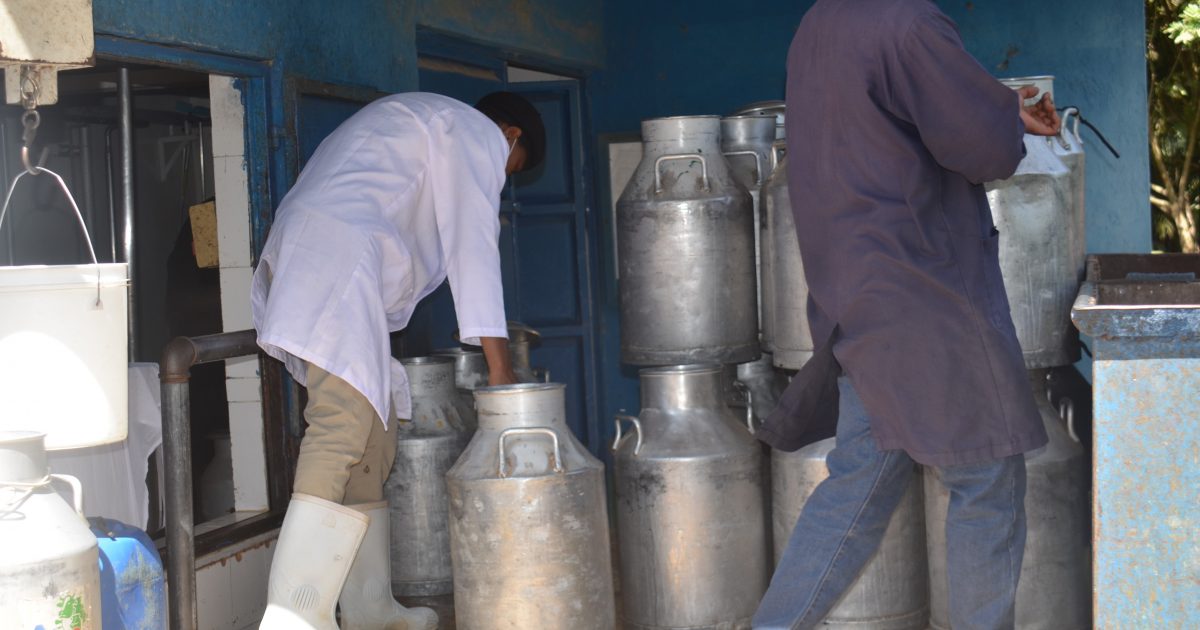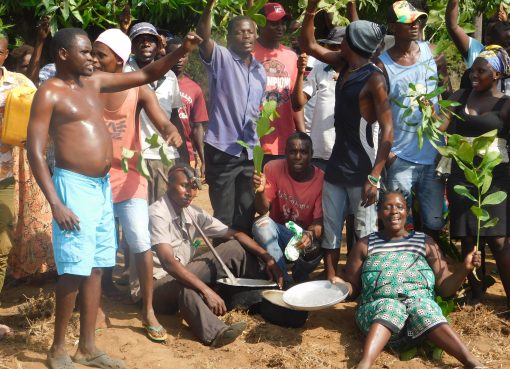Whenever Mr Alfred Mwameso speaks of dairy farming, it is with palpable pride of an expert who believes the best is yet to come for thousands of artisanal farmers in the hilly villages of Wundanyi.
As the manager of Wumingu Cooling Plant that serves farmers of Wumingu Cooperative, he has witnessed an exponential growth in several sectors as efforts to revamp the dairy sector in the region gather pace.
From giving farmers feeds on credit and promoting the use of Artificial Insemination (AI) services for breed enhancement, the cooperative has seen the membership surge from a few hundred members in 2015 to the current 530 members. Currently, the cooling plant is one of the biggest in the region and serves over 24 villages in Wundanyi and Mwatate constituencies.
Mwameso says they are keen on diversification of services to act as incentives to farmers as a way of bolstering their productivity.
“We are keen on enhancing the services we offer our farmers. We are promoting their industry and empowering them to produce more for the plant,” he says with a smile.
Data from the plant is impressive. Currently, the plant is receiving an average daily milk delivery of between 4,900kgs and 5,800kg. This is an increase from the average daily production of 4,500kgs in 2019 and 2020.
In 2021, farmers supplying the plant with milk received Sh50 million as payments for their deliveries.
Mwameso discloses that strategic partnership with stakeholders is the magic bullet that has brought impressive transformation for a plant that was once struggling.
One of the most rewarding collaborations is between the Wumingu cooperative and Kenya Crops and Dairy Market Systems (KCDMS) under USAID’s Feed the Future Programme.
Through the programme, the farmers have received 50 standardized milk containers to control the frequent losses from spoilt milk usually caused by poor handling.
The partnership has also seen the cooperative receive two Dairy Farmers’ Assistants (DFA) who provide extension services to farmers in the region.
KCDMS has also given mobile milk chillers to be used in collecting milk from the farmers. The chillers are specialized thermal-controlled containers that could be strapped on motorbikes and help in retaining quality of milk.
“The chillers ensure the milk is protected from elements that affect the state and quality when being received at the plant,” he explains.
However, the incorporation of ICT in management of the dairy sector at the plant is set to revolutionize record-management and data handling to promote intervention to increase the plant’s milk handling capacity.
This process will entail digitization of the milk collection from farms, documentation of volumes to processing of payments in a bid to streamline production and delivery data to bolster record keeping.
Mr Peter Njima, KCDMS officer overseeing Social Inclusion aspects and Access to Finance for Eastern region that includes Taita-Taveta, Makueni and Kitui counties predicts that the digitization and introduction of ICT in enhancing the operations in the dairy sector is expected to usher in a new era in record keeping, accountability and information management for the farmers.
He explains that harmonization of data from the field and plant would increase the capacity to make informed decisions including intensified monitoring of dairy farming in the area.
“This ICT system is expected to vastly improve how records and history of milk production are processed. This will indicate trends that inform decision making,” he said.
He adds that digitizing the individual farmer’s milk-delivery history would allow the managers and Dairy Farmers’ Assistants (DFA) to make necessary intervention towards boosting milk production.
“The system will harmonize and improve data management. At a glance, one is able to establish trends of milk production by individual farmers. Alternatively, the data will easily show patterns based on regions where milk is being produced,” he explained.
Mwameso, the plant manager, adds that the system would flag out disparity in milk production and compel prompt quick action by DFA. He added that the aspects of data entry would be highly secure because the records would be digitized.
“The digital records will easily flag out decline in production by farmers. When this is detected, we will deploy our farmer’s assistants to check on the problem. We don’t have to wait until the farmer comes to us because we will have noted the issue,” he said.
The proposed digital system is also aimed at curbing fraud especially by farmhands while selling milk. When the data is keyed in at collecting milk at the farm gates, a notification will be sent to the farm owner on the amount of milk that has been delivered. This will strengthen monitoring of records by investors who engage in remote dairy farming.
There are plans to link this system to financial institutions for ease of dairy farmers to get access to credit.
Njima said banks would consider the consistency of delivery, volumes and payments made to a farmer to determine the amount of loans to advance to an individual.
“The records show a farmer’s capacity to repay a loan. Banks and other financial institutions will make decisions based on how a farmer has been performing in milk delivery,” he explained.
Mr Solomon Mwadime, a dairy farmer and a member of the cooperative, said the help by KCDMS has increased farmers’ knowledge on how to maximize dairy production capacity.
He added that most farmers had embraced modern farming technologies including use of AI, challenge-feeding and change of breed to bolster milk production.
Mwadime, who is also the Vice-Chair of the cooperative, predicted that at the current trajectory the cooperative was in, they were aiming at hitting the 1,000-membership target easily.
“The partnerships have allowed us to adopt modern farming technologies to boost milk production for rural farmers. We have become attractive and expect to loop in more members to be delivering their milk here,” he said.
However, one of the main challenges for farmers remained erratic weather patterns. In times of drought, the fodder becomes less and milk production falls. More assistance towards water harvesting for dairy farmers is required to support the sector.
County Executive Committee Member for Agriculture Mr Davis Mwangoma, said the county was keen on creating more partnerships to promote the dairy value chain.
He added that the target was to increase the milk volume production to over 15 million litres with an aim of establishing a milk processing plant in the country.
“The department has invested heavily in terms of subsidizing AI services to improve breeding for maximum milk production. We have a target of 10,000 but have succeeded in getting 8,000 AI done,” he said.
By Wagema Mwangi





